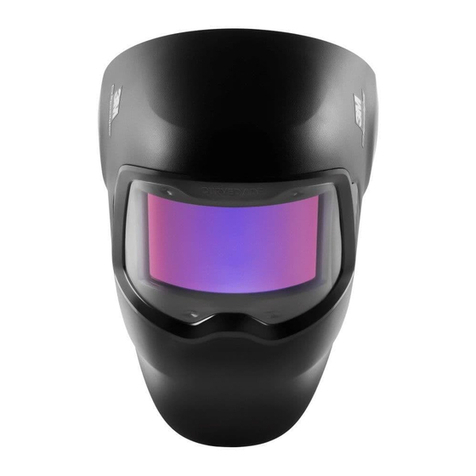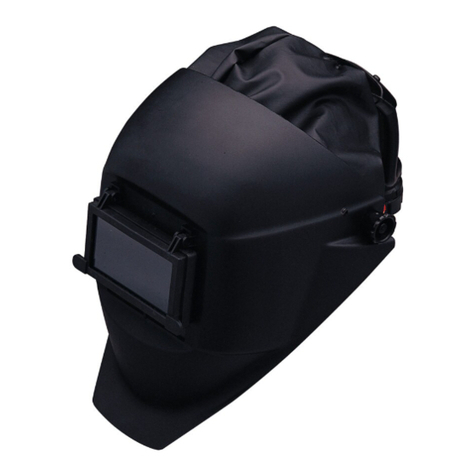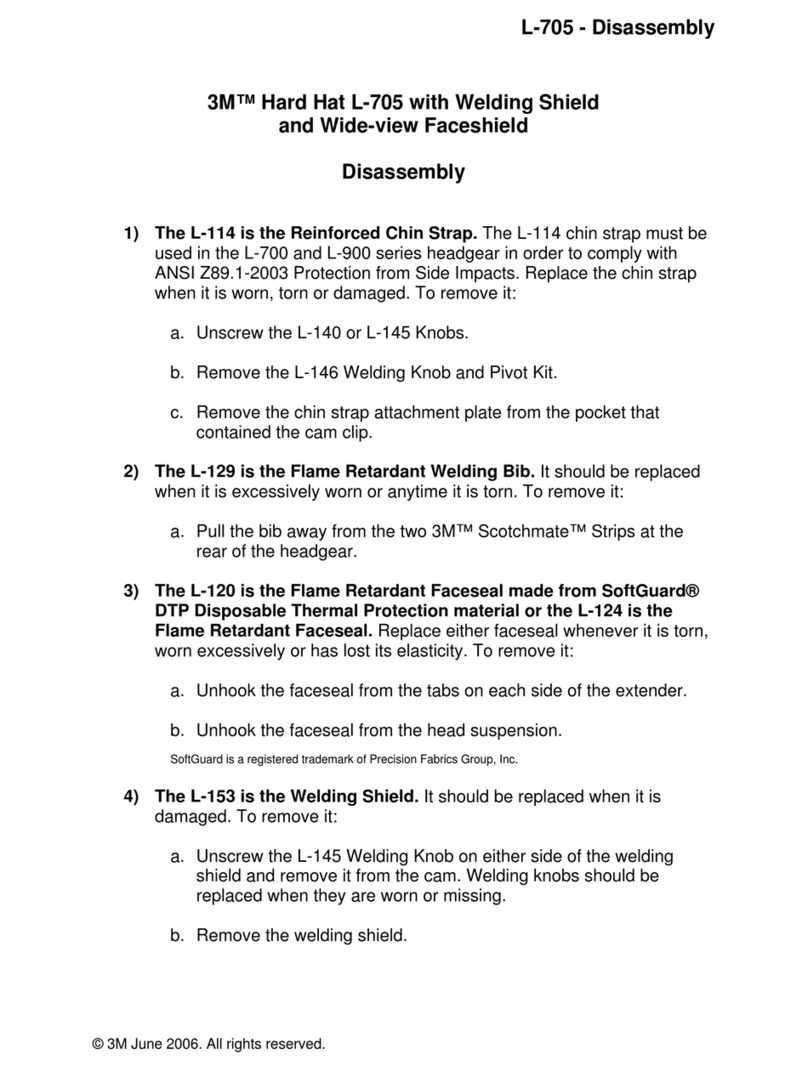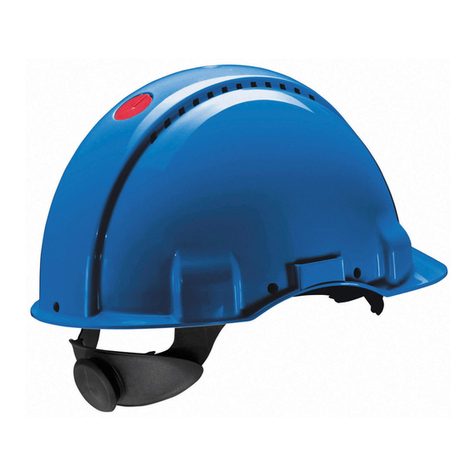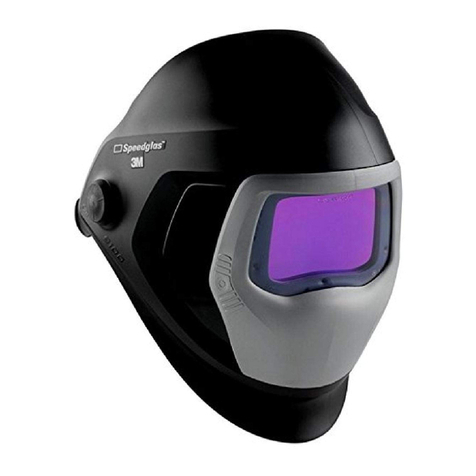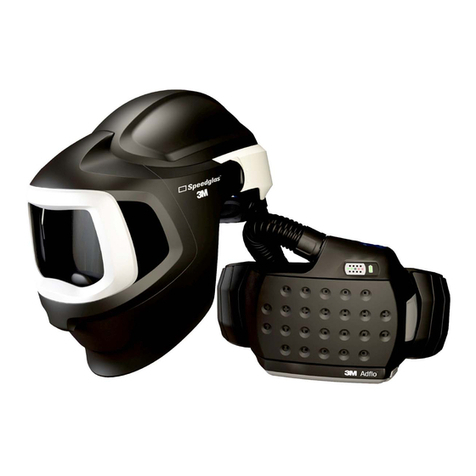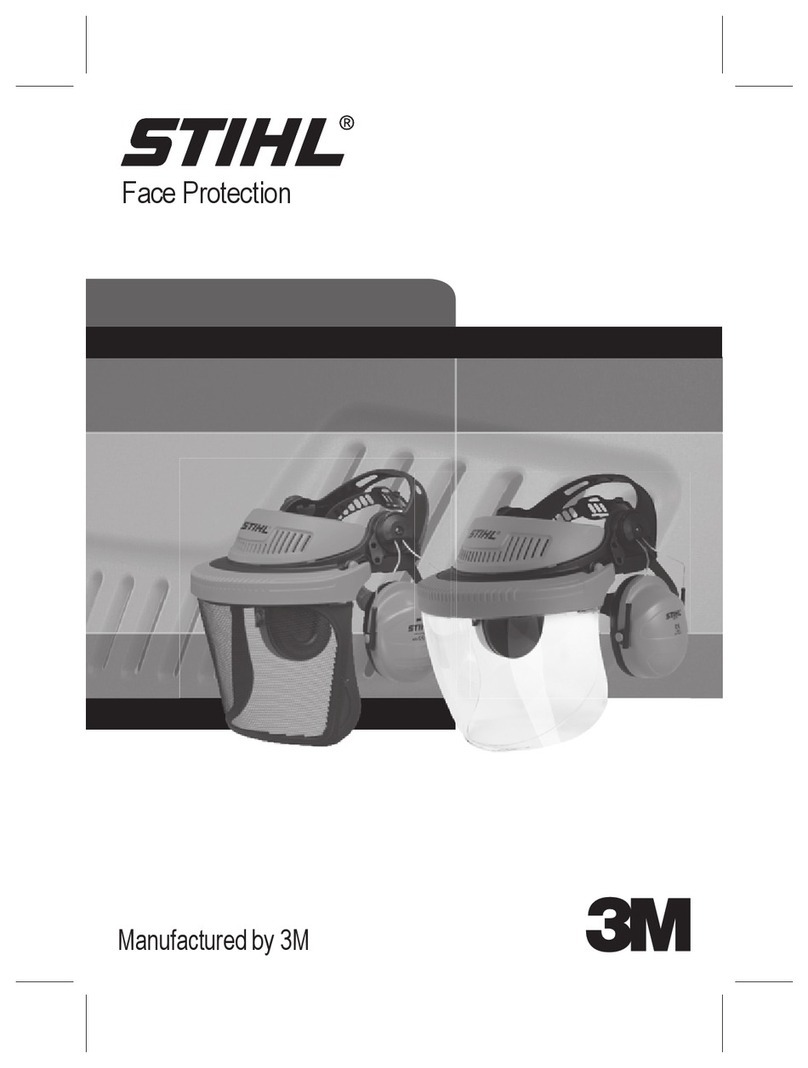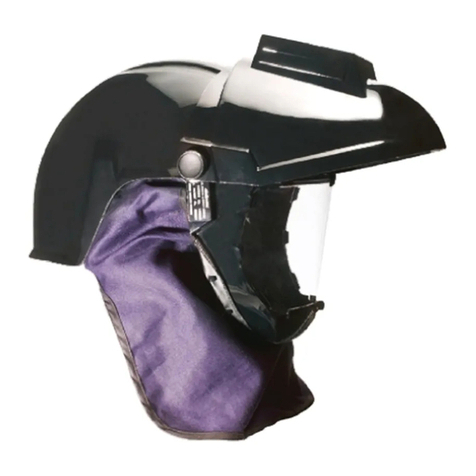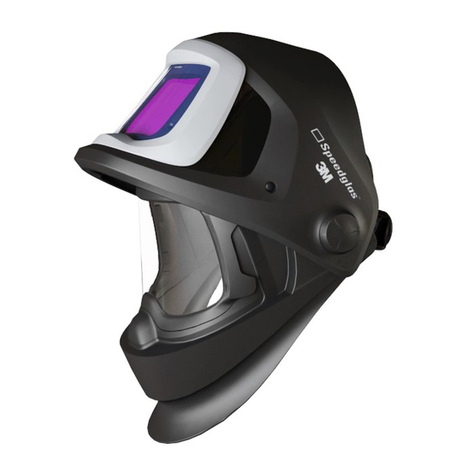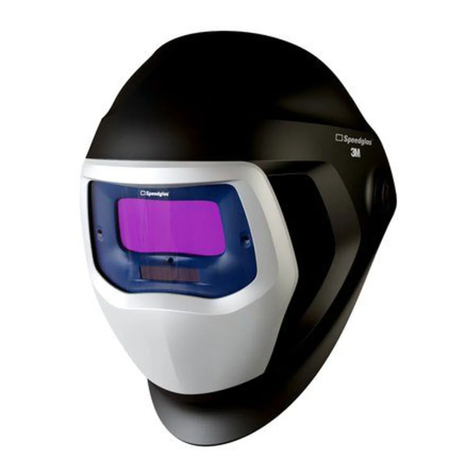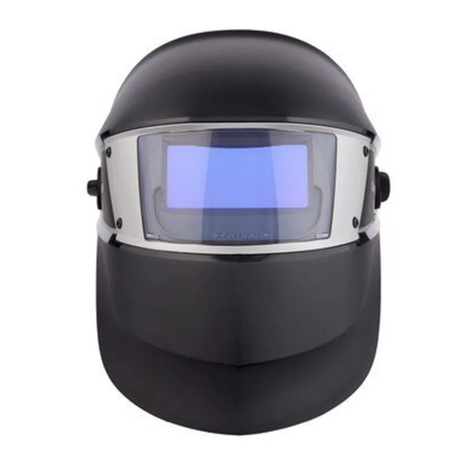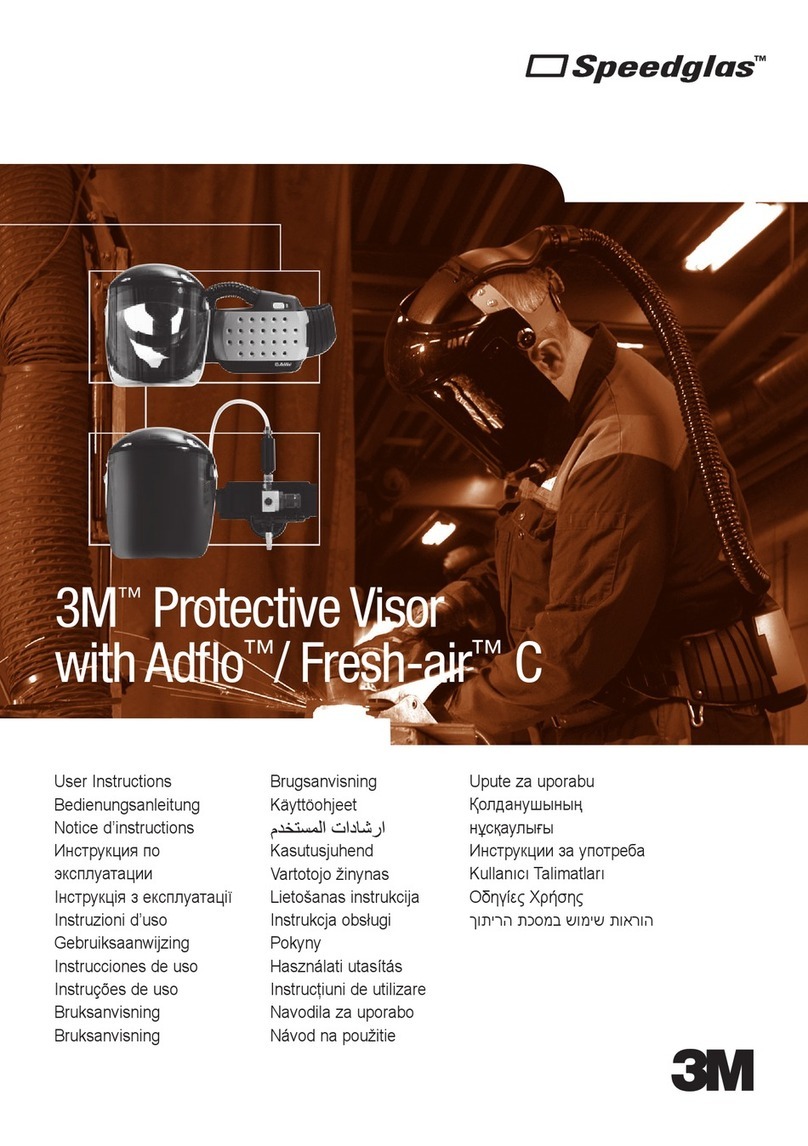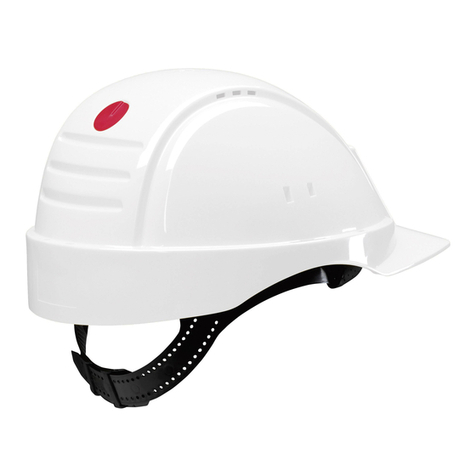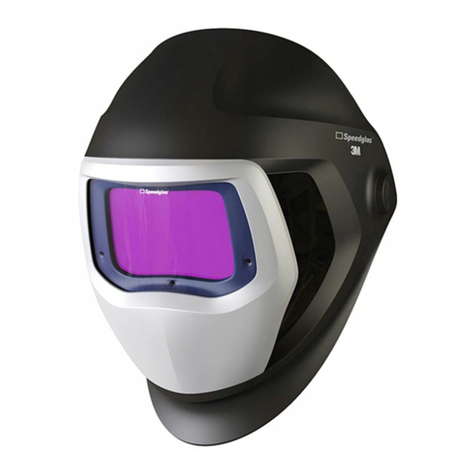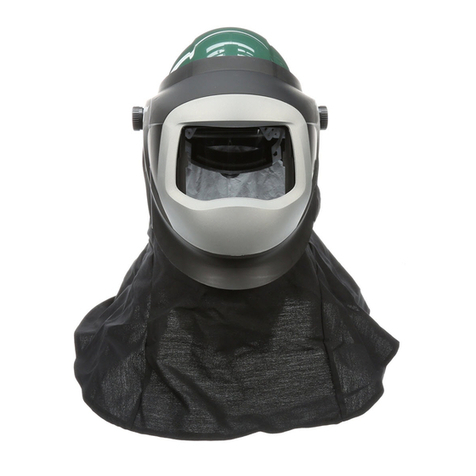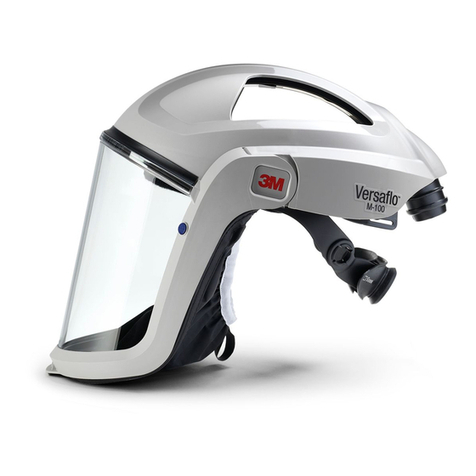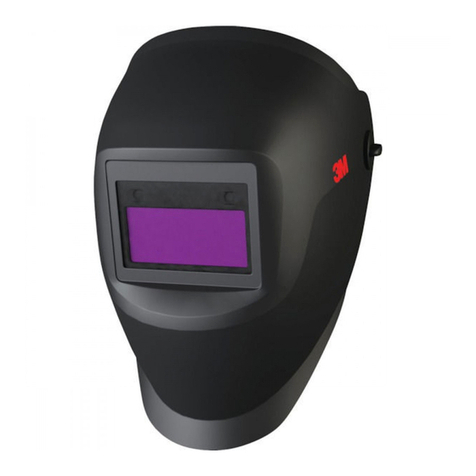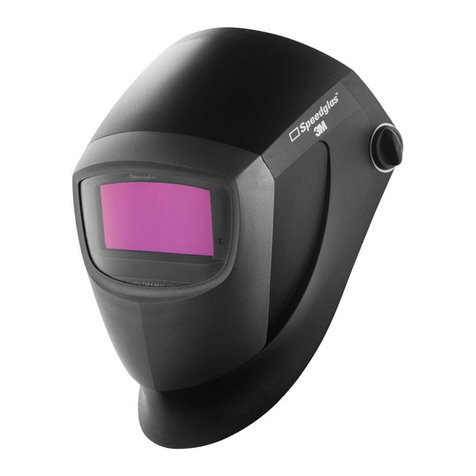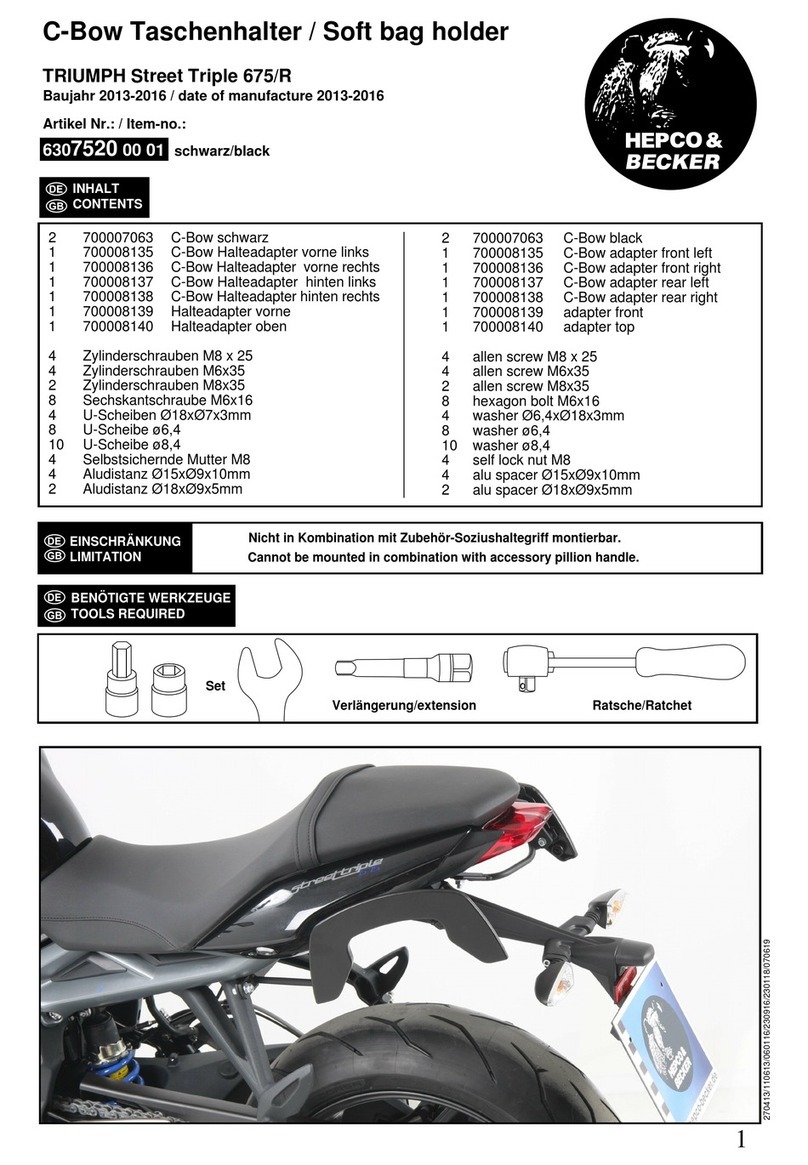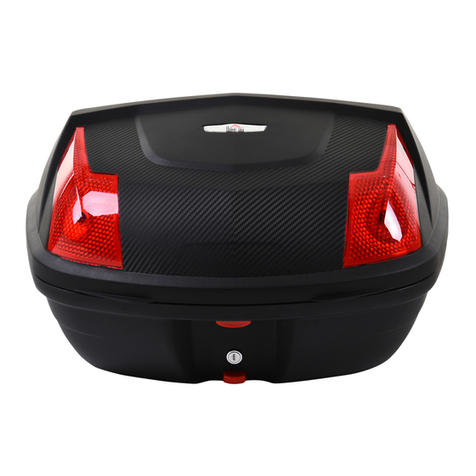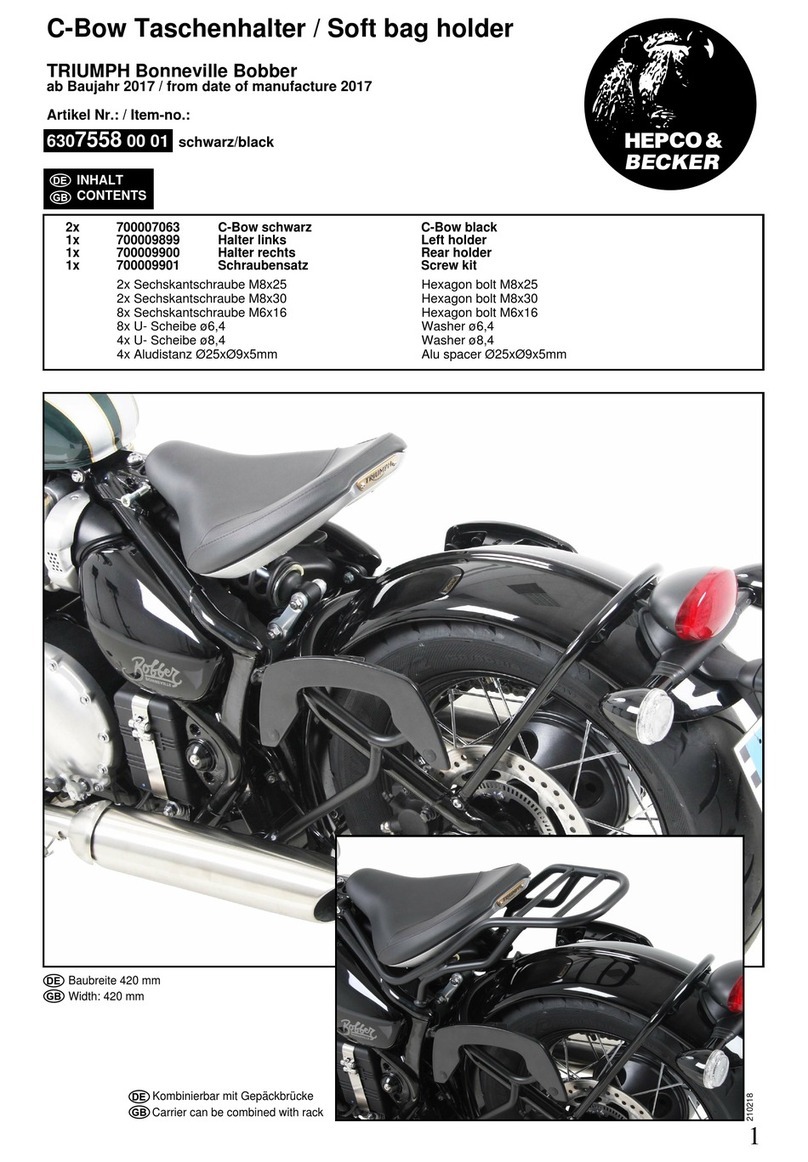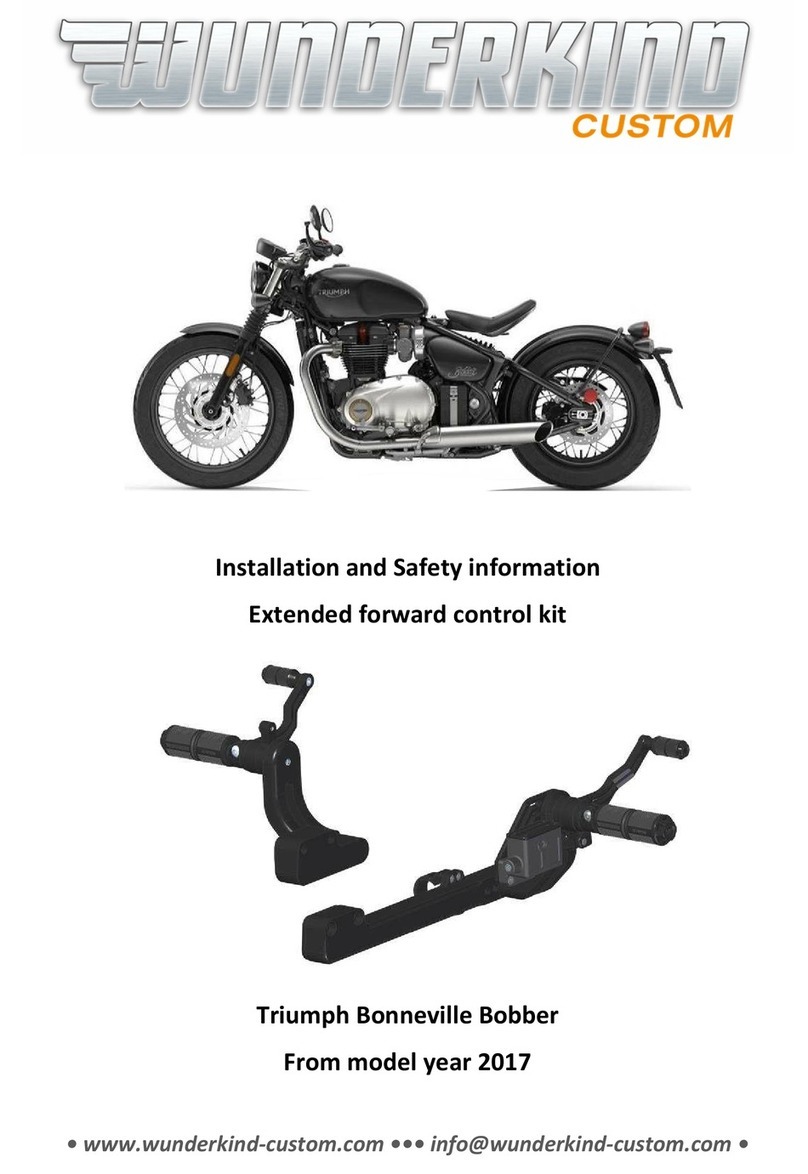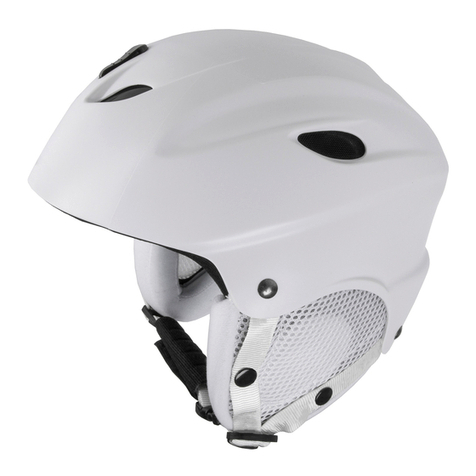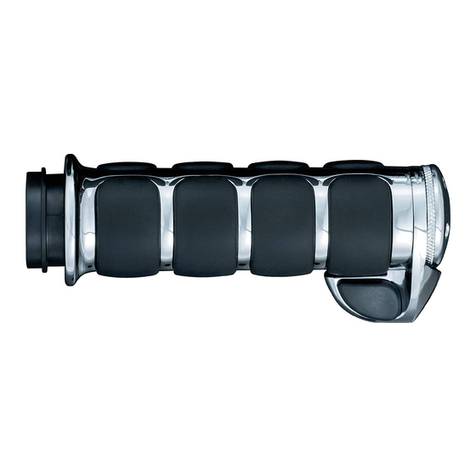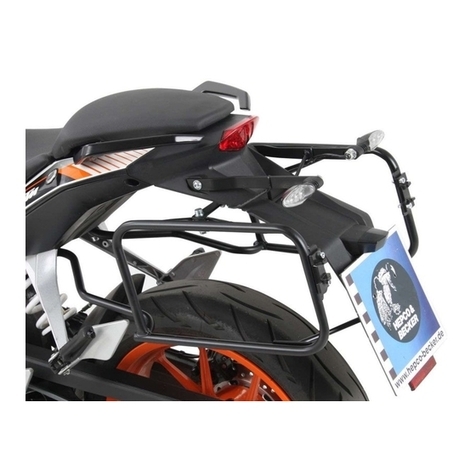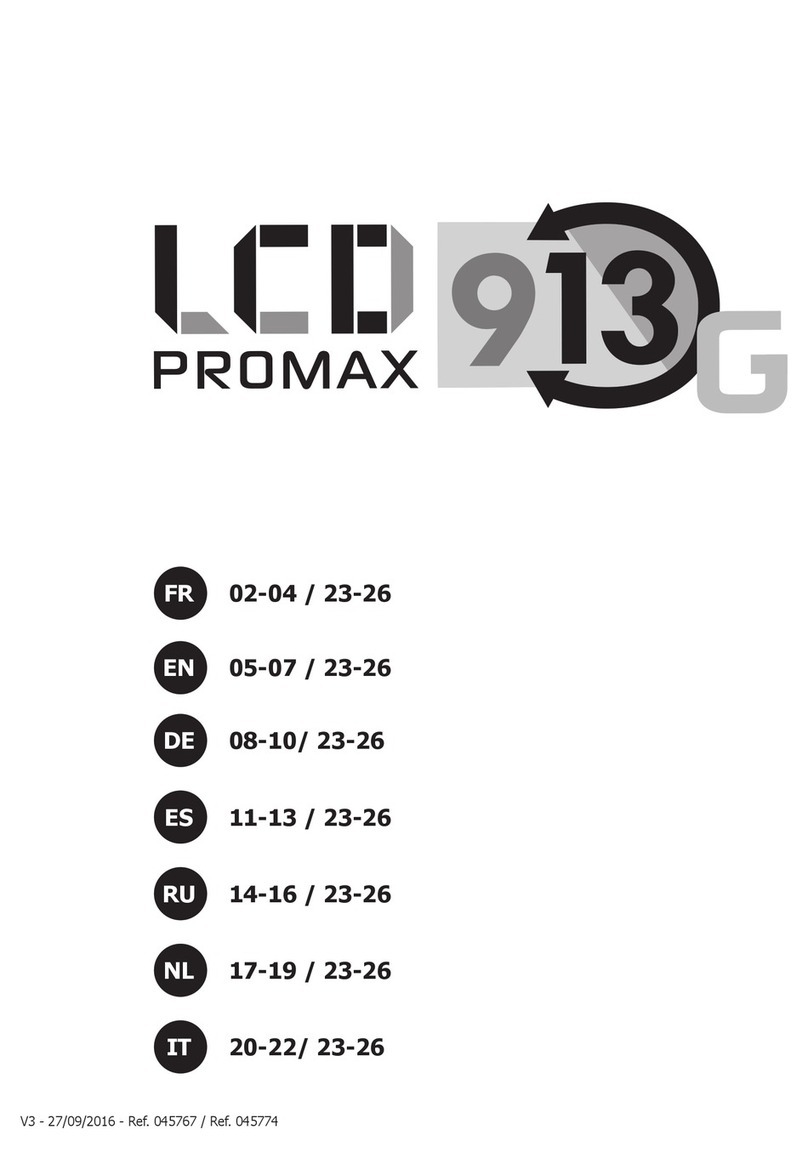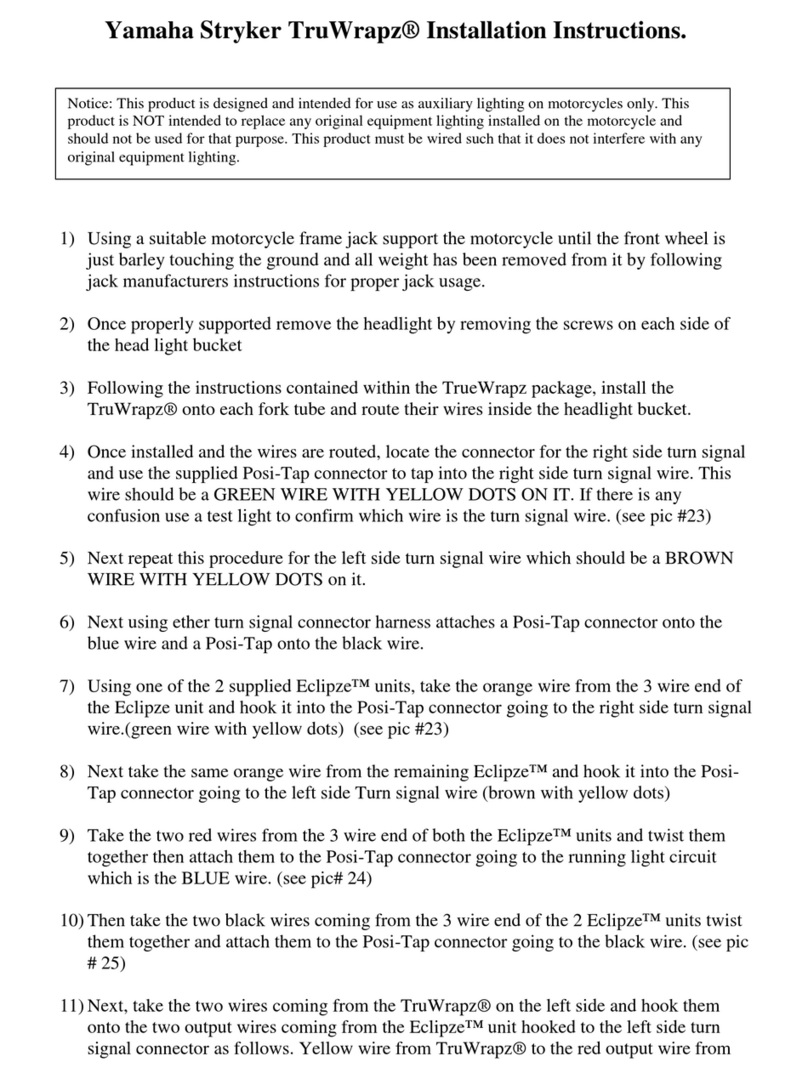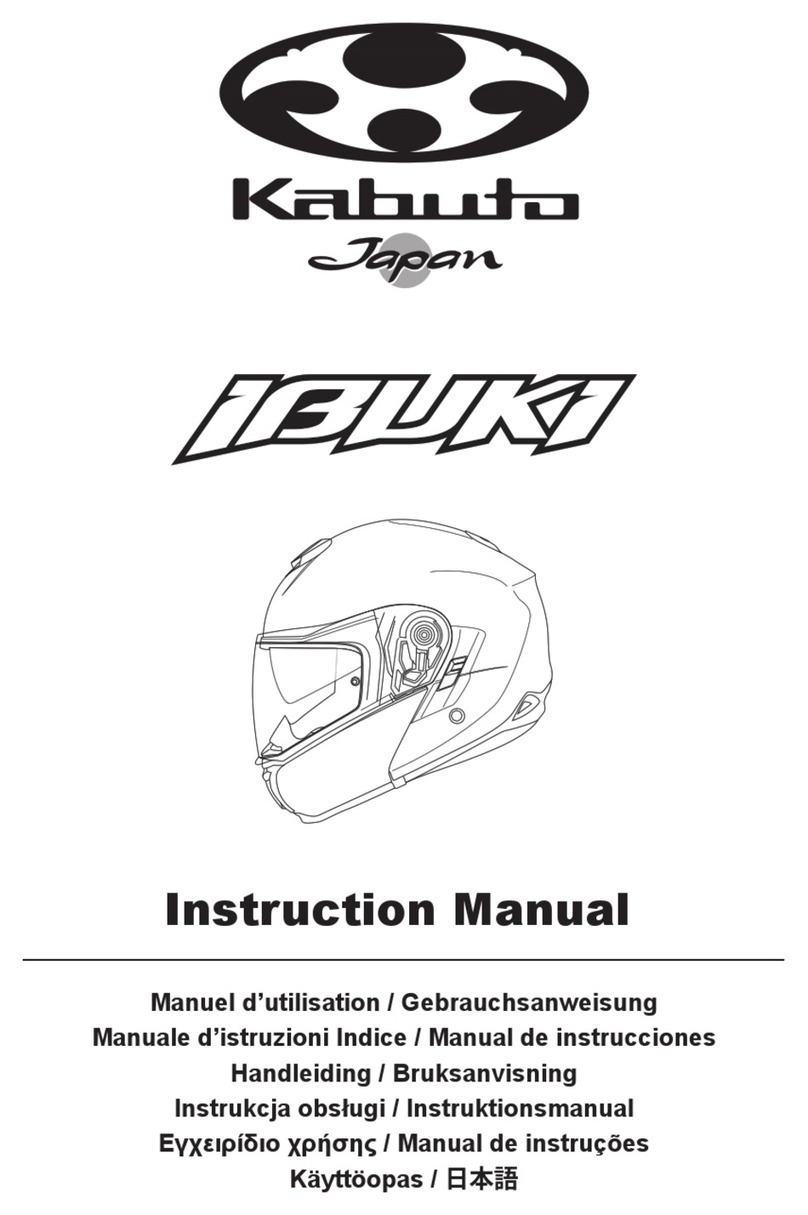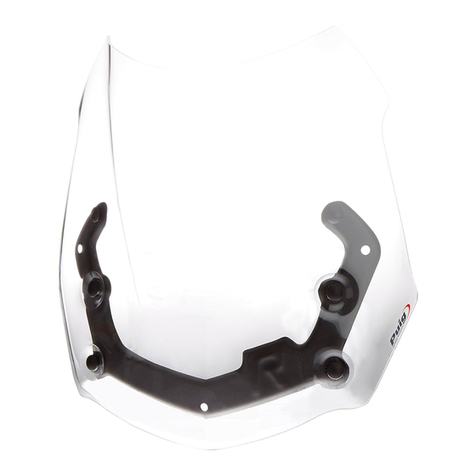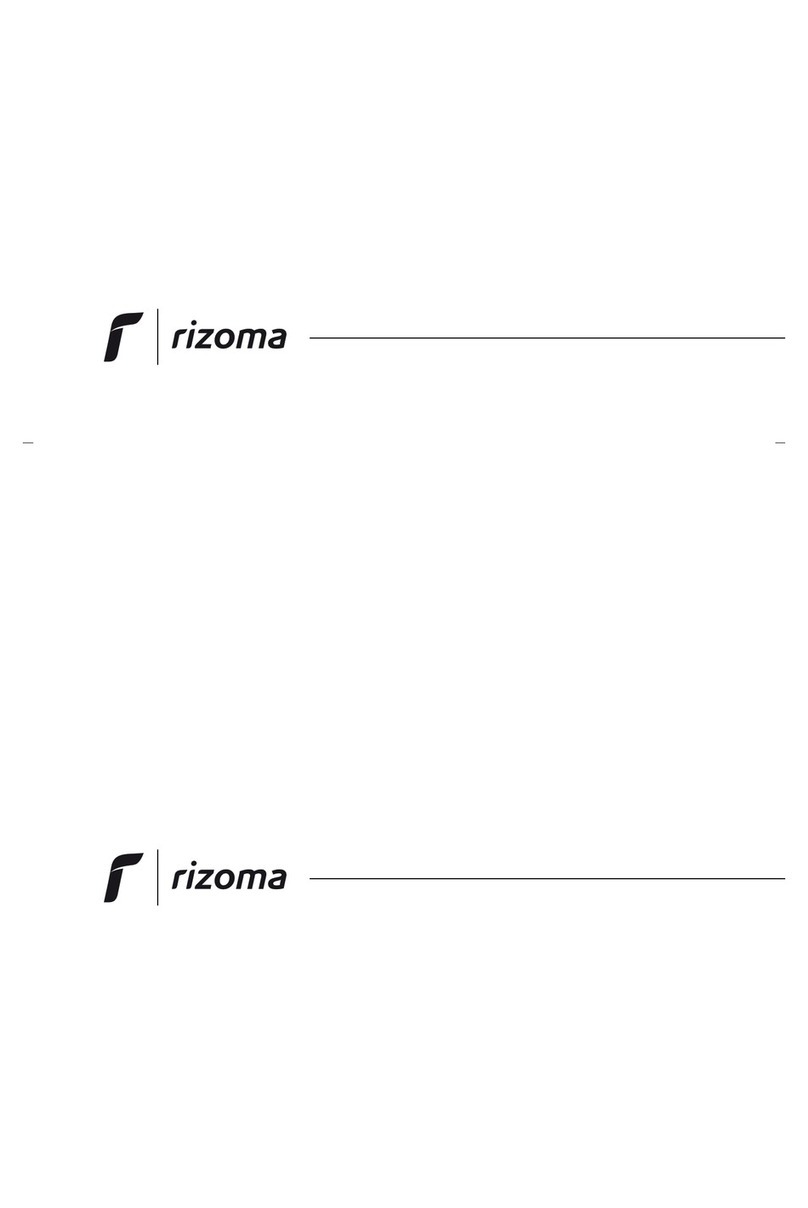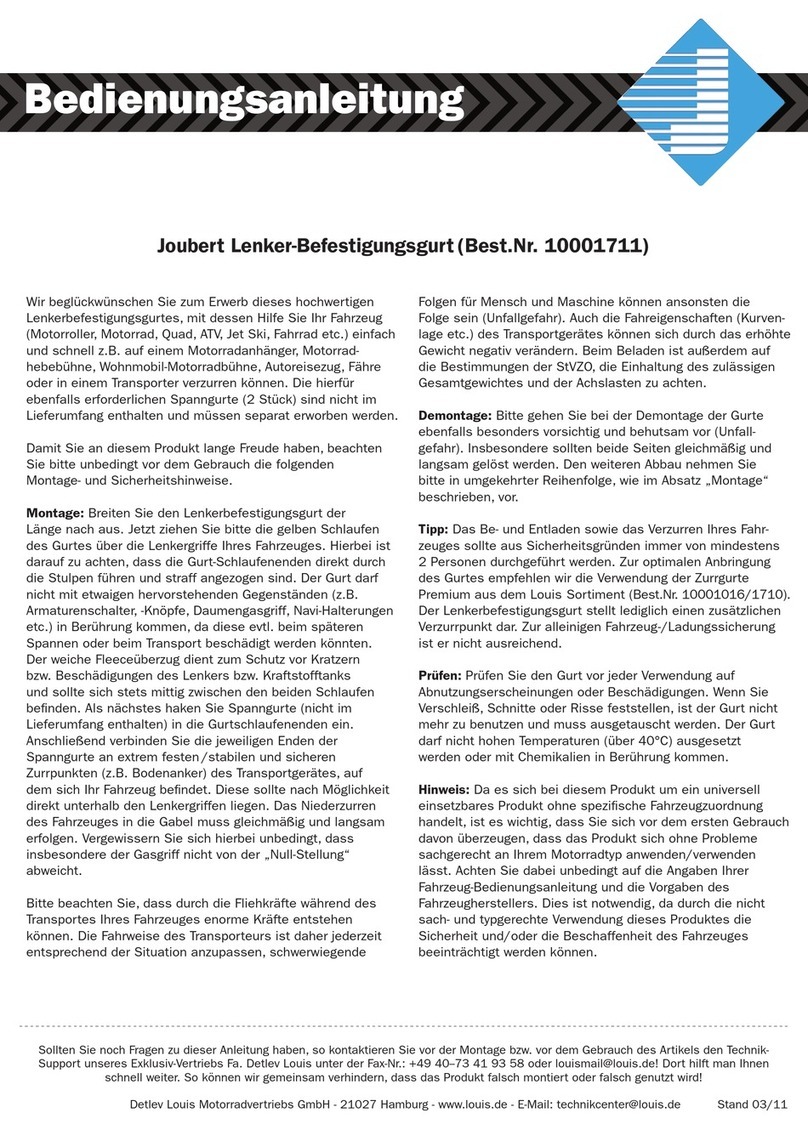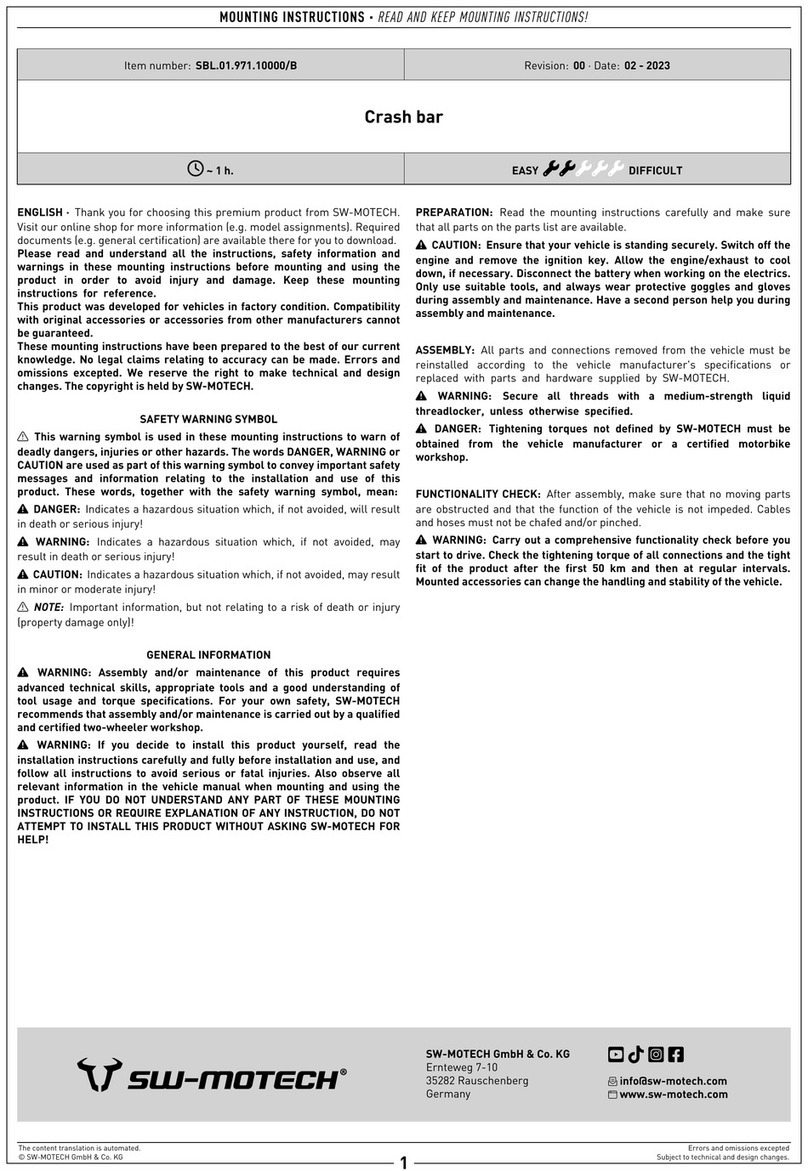
h) Postal
address
manufacturer
g) Very high
temperature
(+150°C)
g) Hyvin korkea
lämpötila
(+150 °C)
g) Svært høy
temperatur
(+150°C)
g) Meget høj
temperaturer
(+150 °C)
g) Mycket hög
temperatur
(+150°C)
g) Zeer hoge
temperatuur
(+150°C)
g)Temperaturas
muy elevadas
(+150ºC)
g) Temperatura
molto alta
(+150°C)
g)) Sehr hohe
Temperaturen
(+150°C)
g) Très haute
température
(+150°C)
i) Molten metal
splash
i) Éclaboussure de
métal en fusion
i) Proiezione di
metallo fuso
i) Salpicadura de
metales fundidos
i) Spetters van
gesmolten metaal
i) Stänk från
gjutmetaller
i) Stænk fra smeltede
metaller
i) Sprut fra flytende
metall
i) Sulat
metalliroiskeet
i)
Schmelzmetallspritzer
j) Electrical
insulation
j) Isolation
électrique
j) Elektrische
Isolierung
j) Isolamento
elettrico
j) Aislamiento
eléctrico
j) Elektrische
isolatie
j) Elektrisk
isolering
j) Elektrisk
isolering
j) Elektrisk
isolasjon
j) Sähköeristys
Electrical insulation is only available in
helmets with no ventilation holes.
h)Adresse
postale du
fabricant
L'isolation électrique est seulement
disponible pour les casques sans orifices de
ventilation
h)) Postadresse
des Herstellers
Eine elektrische Isolierung ist nur bei Helmen
ohne Belüftungsöffnungen möglich.
h) Indirizzo
postale del
produttore
L’isolamento elettrico è disponibile solo nei
modelli di caschi senza fori di ventilazione.
h) Dirección
postal del
fabricante
El aislamiento eléctrico sólo está disponible
en cascos sin orificios de ventilación.
h) Postadres
fabrikant
Elektrische isolatie is alleen beschikbaar in
niet geventileerde helmen.
h) Tillverkarens
postadress
Elektrisk isolering är endast tillgängligt för
hjälmar utan ventilationshål.
h) Fabrikantens
postadresse
Elektrisk isolering er kun for hjelme uden
ventilation.
h) Adresse til
produsenten
Elektrisk isolering er kun tilgjengelig på
hjelmer uten ventilasjonshull.
h) Valmistajan
postiosoite
Sähköiset eristysominaisuudet on
ainoastaan kypärämalleissa ilman
tuuletusaukkoja.
2797
EN 397:2012+A1:2012
-30ºc, +150ºc
d
e
MM
igf
7
